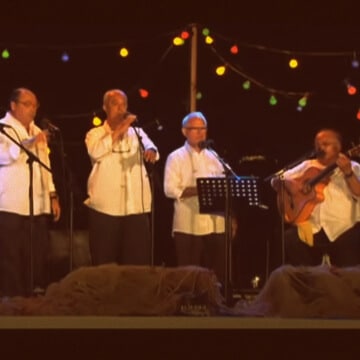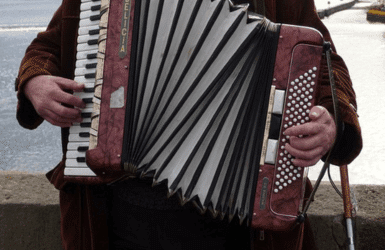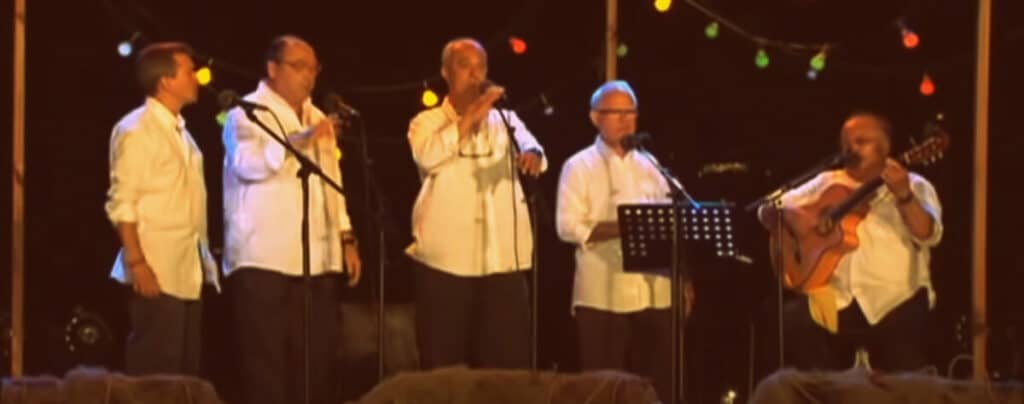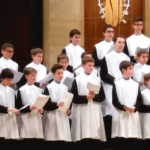
What are Havaneres?
HOW HABANERAS BECAME THE TRADITIONAL CATALAN MUSIC SUNG BY SAILORS
Mention the word “Havaneres” to a Catalan person, and the image that will immediately come to their mind is that of a handful of senior males, dressed with a blue and white striped sailor shirt, singing fishermen songs accompanied by an accordion. They might even start singing “El meu avi” or another havanera song to you, because this music is very close to the Catalans’ hearts.
Most locals will also try to convince you that this was the music brought back from Cuba by Catalan fishermen, sailors and expats. And of course, that it is “only” sung in Catalonia, and mostly in Catalan. But of course, we Catalans are a bit too proud of ourselves, and most don’t know the full story of this nostalgic rhythm that travelled from Europe to Cuba and back. Let’s discover it together!
History of Havaneres
1
A rhythm that went from Europe to Cuba

The roots of Havaneres date back from the 1500's, with a ballroom dance music named "country dance", that reached France during the kingdom of Louis XVI in the late 1600's, and arrived to Cuba in the mid-1700's with the name of "contradanza". There it incorporated creole and African influences, and the rhythm changed from 6/8 to 2/4. Soon it became a popular dance music for the Cuban elites of the capital, La Habana. The oldest known havanera is El Albufar, from 1829.
Spain dominated Cuba until its independence, in 1898. Catalonia and Cuba had strong commercial relationships since in 1778 the Spanish Crown authorized the free trade with the colonies overseas (until then all trade had to go through Cadiz). Coffee beans, cane sugar, tobacco and coca were imported from Cuba, and fabrics, alcoholic drinks and paper were exported to the Americas. Often poor men from the Catalan coast would emigrate to Cuba, spend years there building a business to hopefully come back wealthy one day.
2
... and from Cuba to Spain
This is how eventually Habaneras reached Spain and soon started appearing in Zarzuelas, a Spanish popular type of musical theater cousin of Opera but more informal. Actually Habaneras even made it into Opera and classical music, the most famous example being in Carmen by Georges Bizet. And they were eventually incorporated to the repertoire of Spanish choirs.
And as Havaneres became popular amongst the upper and middle class, the lower classes would hear about them from cheap magazines sold in the streets by blind vendors who sung them. And then men would sing them in the taverns (as the women weren’t allowed there), which is why in Catalonia rather than being sung by large choirs Havaneres are traditional sung by small groups of men.
3
The revival of Habaneras in Catalonia
Towards the mid-20th century, Habaneras had stopped being popular in Catalonia, but then the musician Xavier Montsalvatge published a compilation of havanera lyrics in 1948, which put this type of music back on stage. In the 1960’s new songs started appearing but this time in Catalan, not only in Spanish. In 1967 took place the first Havaneres gathering, that would be the origin of the most important Festival in our land. Since then, more Havaneras bands have been created, some even incorporating female singers, and they’ve become part of the Catalan folklore.
Famous Havaneres songs
4
El meu avi
Les Havaneres lyrics speak of trips overseas, with the nostalgy of a lost land, as well as old loves and fishermen and sailor stories. The most famous one of all is “El meu avi” (My grandfather), explaining the story of a sailor that participated in the Independence War of Cuba and died on a wreck. While not a true story, the composer was inspired in the memories of his grandfather, who fought in that war. And for the Catalans it’s become a sort of unofficial national anthem: pretty much everyone knows its chorus by heart, and a version of it made the closing ceremony of the 1992 Para-Olympics (but turned into a rumba catalana).
5
La Gavina
This havanera song was written by Frederic Sirés in 1924 originally in Spanish as “La Gaviota”, but later on he translated it to Catalan and it’s this version the one that got the fame, specially after the singer Marina Rossell included it on her disc Penyora in 1978.
Sirés emigrated to Cuba as a young man and there worked in a chocolate factory. However, he fell ill and had to return to Spain, where he wrote this song where he asks a seagull (“gavina”) to send his love to a dark beauty across the sea. The song was dedicated to a Cuban girl named Ofelia, the love he left in Cuba.
6
La Bella Lola
La Bella Lola is one of the oldest Habaneras in Spanish, of uncertain origin but probably dating back to the mid 1800’s, and either from Mexico (where they claim the song was inspired in the adopted daugther of a barber) or Cuba. In any case, the song talks about a soldier that returns to port after a year of fighting on the war, and her love interest, a stunning beauty that all the other sailors desire, is still waiting for him.
7
La mar de la calma
This song might not be as “mainstream” as the other three, but it’s still very recognizable by most Catalan people. Written in 1858 by the doctor and composer Nicolau Guanyavens, the song was quickly adopted by the Catalan sailors and fishermen, that kept transforming the music and lyrics until it became the modern version that is sung nowadays. Actually, when researching for this post I was able to find two versions of it. Both go about the memories of a young man about how his father taught him to not trust the sea when it’s in calm because it can soon turn into a storm.
But one mentions the SW “Garbi” wind that will take them to France, and how a quiet night at sea turns into a storm where the boat feels like a fragile piece of wood. The other version instead mentions the NW Mistral wind that takes them back to port, where the mother awaits, crying with worry for them. Who knows if one was meant to be the second part of the other?
Where to hear live Havaneres
8
Festes Majors
During the Summer months most Catalan villages celebrate their Festa Major – the main festival of the town (or district). It’s a time of traditional events: parades with giants and monsters, sardana dancing, correfoc fire runs, castellers human castles… And in many areas along the Catalan Coast, specially on the Costa Brava, also Havaneres concerts. In Barcelona, try the Festa Major de Gràcia (mid-August) and the Festa Major de Sants (right after the Festa Major de Gracia), as well as La Merce Festival (around September 24).
Sometimes during the concerts it’ll be served “rom cremat”, a Catalan beverage consisting in dark rum, coffee beans, cinnamon, lemon rind and sugar, cooked in a pot, then set in fire until the alcohol is consumed. It’s THE drink to be drunk with Habaneras, specially at night when the flames stand out more against the darkness.
9
Festival de Calella de Palafrugell
Every Summer, the fishing town of Calella de Palafrugell in the Costa Brava celebrates their famous Cantada d’Havaneres, the largest Habaneras festival in Catalonia. It all started with a small gathering of singers in 1966, and nowadays they receive over 40,000 visitors every year. The concerts take place on a stage set up in purpose in the Port-Bo beach, and during the Festival the village is packed. Buying tickets in advance is a must, although you can still hear the music from the surrounding streets. And Calella de Palafrugell being almost 2 hours away from Barcelona, it’s highly recommended to stay overnight at some Costa Brava hotel to avoid having to drive back late at night.
RESEARCHING FOR A TRIP IS TIME-CONSUMING…
Need more inspiration?
Our 100% FREE Barcelona Collection will give you everything you need to organize the trip of your lifetime to Barcelona.
BEST INSIDER TIPS FROM THE PROS!








